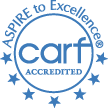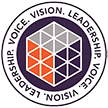Prescription Drug Addiction Treatment in Houston, Texas
The fastest-growing drug abuse problem in the U.S. isn’t cocaine, meth, or heroin. It’s prescription drugs and it is affecting the lives of all age groups profoundly, but teens and young adults in particular. The most frequently abused prescription drugs are often found in many home medicine cabinets. They are:
If the abuse is recognized early, prescription drug addiction treatment can prevent the problem from becoming a serious addiction. Comprehensive treatment is available if you or a loved one are suffering from addiction to a prescription drug. Luna Recovery Services in Houston, Texas can design a treatment program appropriate for any situation.

Technically, a drug is a substance that is meant to be used in:
- Diagnosing
- Relieving
- Curing
- Treatment
- The prevention of disease
Furthermore, a prescription drug is:
- Prescribed by a physician
- Meant for use by one person
- Bought at a pharmacy
- Regulated by the FDA
Polysubstance Use in Texas
As overdose deaths continue to rise nationwide, in Texas the rate of overdose deaths was projected to increase from a predicted 4,752 in May 2021 to 5,107 in May 2022, a 7.5% increase. According to a Texas Health and Human Services report, opioids, including prescription pills and fentanyl, have caused the most overdose deaths in Texas.
Because opioids are often mixed with other drugs, there has been an increase in deaths known as polysubstance overdoses. The most common drug combinations were commonly prescribed pills like oxycodone and hydrocodone, mixed with depressants like benzodiazepines. Also, psychostimulants are often combined with methamphetamine and amphetamine.
The CDC has reported that the trend in overdose deaths nationally is similar to Texas, with overdose deaths involving opioids up from 70,029 in 2020 to 80,816 in 2021. U.S. overdose deaths In 2021 increased half as much as in 2020 – but are still up by 15%.
What is Prescription Drug Misuse or Abuse?
Using a prescription drug in a way that wasn’t meant to be used is prescription drug abuse or misuse. This includes taking a friend’s prescription pain reliever for your toothache or injecting or snorting crushed pills to get high. Abuse like that may be compulsive and continuous even though there are adverse consequences. It has been estimated that more than 18 million people have misused prescription drugs in the previous year.
What are the Most Abused Prescription Drugs?
Due to their mind-altering capabilities, the most commonly abused prescription drugs are:
Prescription tranquilizers include benzodiazepine medications including:
- Xanax (alprazolam)
- Valium (diazepam)
- Klonopin (clonazepam)
Muscle relaxants include:
- Ozobax (baclofen)
- Soma (carisoprodol)
Prescription painkillers include opioid drugs such as:
- Vicodin (hydrocodone)
- OxyContin and Percocet (oxycodone)
- Actiq, Subsys, Fentora (fentanyl)
- morphine
Prescription sedatives include barbiturates such as:
- Ambien (zolpidem)
- Lunesta (eszopiclone)
- benzodiazepines are also sometimes prescribed for sleep problems
Examples of prescription stimulant drugs include:
- Adderall (amphetamine)
- Ritalin and Concerta (methylphenidate)
Common Signs of Prescription Drug Abuse
The signs of abuse will vary, depending on the type of drug. However, there are common symptoms for each type of drug. Generally, a person misusing prescription drugs may show the following symptoms no matter what drug is being used.
- Taking a higher dose than what was prescribed
- Taking the medication more often than prescribed
- Being noticeably hostile and having mood swings
- Sleeping more or less
- Poor decision-making
- Being unusually high, or energetic
- Sleepiness
- Constantly “losing” prescriptions or needing early refills
- Forging, stealing, or selling prescriptions
- “Doctor shopping” (getting prescriptions from more than one prescriber)
Sedatives and Tranquilizers
- Drowsiness
- Feeling disoriented
- Slurred speech
- Loss of coordination
- Trouble concentrating
- Memory problems
- Restricted breathing
- Lightheadedness
Opioid Pain Relievers
- Constipation
- Nausea
- Feeling of euphoria
- Restricted breathing
- Drowsiness
- Lack of coordination
- Need to increase the dose for pain relief (tolerance)
- Sensitivity increases or pain worsens with higher doses
Stimulants
- Increased alertness
- High blood pressure
- Arrhythmia (irregular heartbeat)
- Decreased appetite
- Insomnia
- Hyperthermia (elevated body temperature)
- Paranoia
- Anxiety
- Agitation
Why Do People Abuse Prescription Drugs?
People start misusing prescription drugs for many reasons such as:
- To get high or just feel good
- To relax and relieve tension
- To relieve pain
- To decrease appetite and lose weight
- To increase energy and alertness
- To experiment with the mental effects
- To be accepted by peers or to be more comfortable socially
- To improve concentration for school or work
What are the Risk Factors for Prescription Drug Addiciton?
The abuse of prescription drugs is highest among teens and young adults. The reasons they do this include:
- Current or past addictions to other addictive substances including alcohol and tobacco
- A history of substance abuse and addiction in their family
- Certain preexisting mental health disorders
- A social atmosphere where:
- Drug use occurs commonly and
- There is peer pressure to abuse drugs
- Having prescription drugs at home where there is easy access.
- Lack of knowledge about the possible danger of prescription medications
What is a Chemical Dependence?
Chemical dependency is a disease that features a reliance on mind or mood-altering chemicals. These may be alcohol, street drugs, and some prescription medications. Chemical dependency is a potentially fatal condition that is chronic and progressive. It can end up harming your body, job, family relationships, and friendships.
The repeated use of mind-altering substances causes a change in brain function. The body and mind begin to rely on particular chemicals just to be able to cope. This is when they are being used not to feel pleasure, but just to feel normal. This is chemical dependence.
Mental Illness and Prescription Drug Abuse
Any mental illness may appear in combination with chronic drug abuse. Some common serious mental disorders linked with chronic drug abuse include:
- Bipolar disorder
- Schizophrenia
- Attention-deficit hyperactivity disorder (ADHD)
- Obsessive-compulsive disorder (OCD)
- Post-traumatic stress disorder (PTSD)
- Antisocial personality disorder
- Panic disorder
Conversely, some of these disorders also have an increased risk of drug abuse. They are:
- Antisocial personality disorder (5.5% risk)
- Manic episodes (14.5%)
- Schizophrenia (10.1%)
- Panic disorder (4.3%)
- Major depressive episode (4.1%)
- OCD (3.4%)
- Phobias (.2.1%)

How Common Is This?
SUDs and mental health problems sometimes occur at the same time because:
- Some substances can cause an individual with SUD to experience symptoms of a mental health disorder
- Mental health problems can lead to alcohol or drug use as a method to relieve symptoms
- SUDs and mental health disorders have some underlying causes in common including:
- Changes in brain structure
- Genetic susceptibility
- Early experience of trauma or stress
More than 25% of people living with serious mental health disorders also have a substance use disorder.
Diagnosing Prescription Drug Addiction
For a diagnosis of substance use disorder (SUD), also called addiction, mental health professionals mainly rely on the Diagnostic and Statistical Manual of Mental Disorders (DSM-5). To be diagnosed with SUD the individual must display two of the following signs within 12 months:
- The individual regularly ingests larger amounts of the substance or for a longer amount of time than intended.
- They frequently try or mention a desire to reduce their intake of the substance and fail.
- Spending large amounts of time, getting, using, and recovering from the use of the drug.
- Drug cravings or declaring a strong desire to use it.
- Decline in performing professional, educational, and family responsibilities.
- Using the substance regularly despite social, emotional, or personal problems that might be worsening because of the use.
- Giving up social activities, hobbies, or passions due to substance use.
- Using the substance in situations or environments that could cause physical harm as a result.
- Continuing to regularly use the substance and ignoring the physical or psychological harm it has probably already caused.
- Increased tolerance.
How to Help Someone You Care About
You may want to stage an intervention on your own. Your intervention plan should include:
When you talk to the person. Don’t try it when the person is under the influence. The best times are usually right after an episode of heavy use or first thing in the morning.
Where will you talk? Decide the location and how to get the person to go there.
Decide how long you will spend talking with the person. More than 60 minutes usually ends up with everyone getting frustrated.
This might include relatives, friends, and coworkers.
You might want to write down what you want to say so you can practice beforehand.
- Tell the person how their drug use has affected you. Be specific about what they’ve done and how you felt.
- Tell them you don’t want to continue the relationship unless they get treatment. Tell them what you will or won’t do.
Check out prescription drug addiction treatment centers and make arrangements ahead of time.
If you’re not confident that you can do this, you may need a health professional there.
Prescription Drug Addiction Treatment
There is no cure for prescription drug addiction or any SUD. However, there is a treatment that can help an individual overcome their addiction, stay in recovery, and remain drug-free. In Texas, Luna Recovery can provide a complete package of options no matter what your situation is. Treatment for prescription drug addiction needs to include the following:
The purpose of detoxification is to help a person stop using the drug as quickly and safely as possible. Sometimes this can be accomplished on an outpatient basis, but most individuals going through prescription drug withdrawal will need a professional drug detox in Houston, TX. The symptoms of drug withdrawal can be life-threatening at the worst and at best, so uncomfortable that many people relapse before completing detox on their own.
Depending on the individual’s needs, different levels of care may be provided such as:
- Residential Program–the person lives at the treatment facility with 24-hour medical supervision and no exposure to drug use triggers.
- Partial Hospitalization Program (PHP)–While this is an outpatient program, it has generally the same level of intensity of treatment, but the individual goes home at the end of every day.
- Intensive Outpatient Program (IOP)–This is an intense program, however, fewer hours and days at the treatment facility are necessary compared to the PHP.
- Outpatient Program (OP)–OPs are good for continuing treatment after completing a higher level of care or for people with a mild addiction.
Dual Diagnosis Program–For people with co-occurring mental health and substance disorders, a dual diagnosis program that treats both conditions at the same time is a must.
After clearing the drugs from your body, your physical dependence is conquered. Addiction counseling is where you overcome your psychological dependence.
- Individual Therapy–Individual therapy provides an opportunity to build a confidential relationship with your therapist. You may discover your reasons for abusing drugs in the first place.
- Group Therapy–In group sessions you learn and help support the other members. This is a good way to view things from someone else’s perspective.
- Family Therapy–Addiction is a family problem and families may wish to be part of the solution.
- Behavioral Therapies–Behavioral therapies help people see the errors in their thinking and “unlearn” the negative behaviors they have learned.
Why Go To Luna Recovery?
Luna Recovery can provide you with a complete program for SUD treatment. We have programs and addiction specialists who are experienced in evidence-based approaches to psychotherapy including holistic, and neurofeedback therapy. In addition, we have a specialized adolescent program. Teens and young adults are commonly addicted to prescription drugs and tend to have a better outcome when in a group of their peers. This is why you need Luna Recovery. Contact us today.


